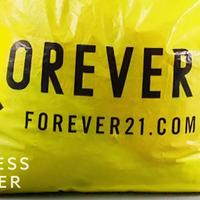The Rise And Fall Of Forever 21
Forever 21 was once among America's
fastest-growing fast-fashion retailers.
It transformed its once penniless
founders into billionaires,
established itself as a powerhouse
in the fast-fashion world,
and, at its peak, made $4.4 billion in revenue.
But the once flush company is now
preparing to file for bankruptcy.
So, what happened?
Back in the day, Forever 21
embodied the American dream.
In 1981, Jin Sook and Do Won "Don" Chang
moved to Los Angeles from South Korea
with no money, no college degrees,
and speaking little English.
To make ends meet, Jin Sook worked as a hairdresser
while Don worked as a janitor,
pumped gas, and served coffee.
Until he noticed that "the people who drove
the nicest cars were all in the garment business."
So three years later, with $11,000 in savings,
the Changs opened a 900-square-foot
clothing store called Fashion 21.
The couple took advantage of wholesale closeouts
to buy merchandise from manufacturers at a discount.
Their system worked.
The store made $700,000 in sales its first year.
Fashion 21 was initially only popular
with LA's Korean American community.
But the Changs leveraged their success,
opening new stores every six months,
which broadened the company's customer base
at the same time.
They also changed the name to Forever 21
to emphasize the idea that it was
"for anyone who wants to be trendy,
fresh and young in spirit."
The company's key to success was simple:
cultivate a huge following by selling
trendy clothing for low prices.
While this is something that today's consumers
pretty much expect,
Forever 21 was one of the first to do it.
And they were the fastest.
Jin Sook was eventually approving over
400 designs a day.
Which meant the company could sell trends
as they were happening.
Even if some of those designs landed Forever 21 in trouble.
But while other brands and designers
might not have been Forever 21's biggest fans,
customers couldn't get enough
of their affordable styles.
As a result, Forever 21 became one
of the largest tenants of American malls,
with 480 locations nationwide.
And by 2015, business was booming.
Forever 21's sales peaked,
with $4.4 billion in global sales that year.
As for the Changs?
They became one of America's wealthiest couples,
with a combined net worth reaching
an estimated $5.9 billion in March 2015.
Forever 21's goal was to become
an $8 billion company by 2017
and open 600 new stores in three years.
But the company's aggressive expansion
would also lead to its downfall.
Part of what made Forever 21 popular in the first place
was its fast-fashion model.
Even though its products were always mass-produced,
they still felt unique because its stores
only sold select styles for a limited time.
However, as the company focused on growing bigger,
its styles became more "cookie-cutter."
As a result, Forever 21 started
to lose touch with its core customers,
while competitors like H&M and Zara rose. No longer the trendsetter,
Forever 21 became the butt of the joke.
It's also no longer the fastest in the game.
Internet brands like Fashion Nova churn out
celebrity- and influencer-inspired
styles at a rapid-fire pace.
And as e-commerce has continued to boom,
traditional retailers like Forever 21
have struggled to adapt to
changing consumer behaviors.
According to a March 2019 survey,
millennials make 60% of their purchases online
and overall prefer online shopping
over going to a physical store.
Yet, Forever 21 continued opening new stores
as recently as 2016,
even expanding existing stores
to take over multiple floors with mens,
childrens, and home-goods sections.
Which could help explain why Forever 21's sales
are estimated to have dropped
by 20% to 25% in 2018.
On top of that, the Changs,
who still own the company,
have lost more than $4 billion
from their personal net worths.
The company overall is now $500 million in debt
and considering filing for bankruptcy.
Forever 21 has already started downsizing its stores.
And as one of the largest tenants of America's malls,
a widespread shutdown of Forever 21
could exacerbate what's already being referred to
as the "retail apocalypse,"
which has already closed more than 15,000
retailers across the US
and could shut down 75,000 more,
according to investment firm UBS.
But bankruptcy doesn't always
mean the end for a company.
In fact, it could give Forever 21
time to restructure and bounce back.
The company could shut down
its least profitable stores
and try rebranding itself.
But in an age of cheap internet boutiques
and fast-fashion empires, this might not be enough.
So it turns out Forever 21
might not be forever after all.

